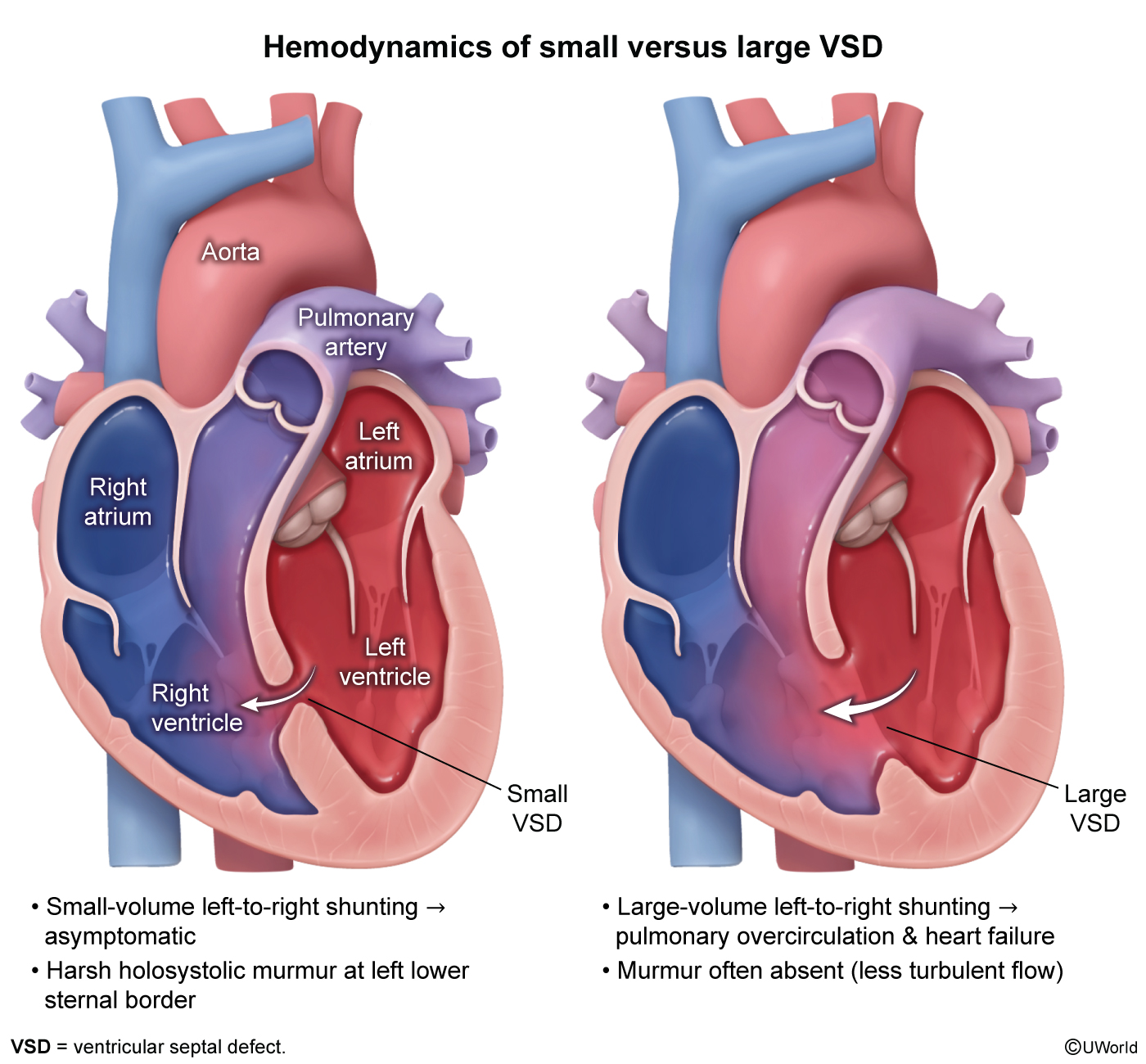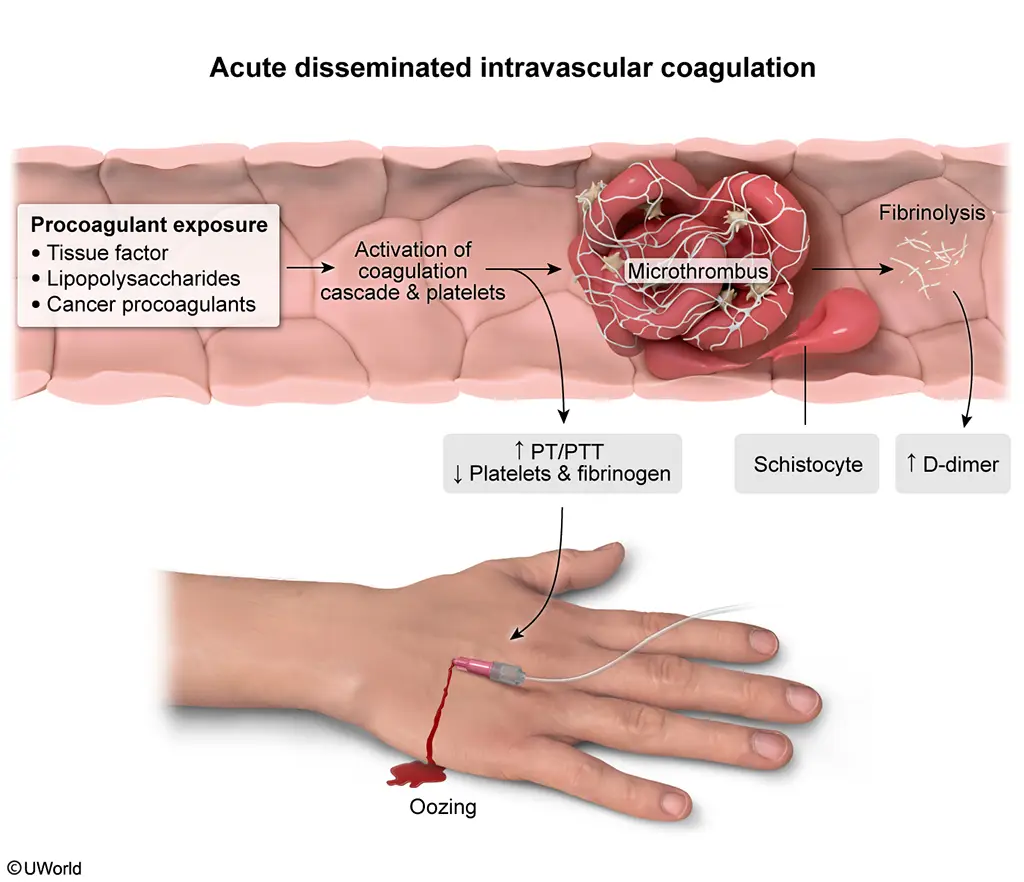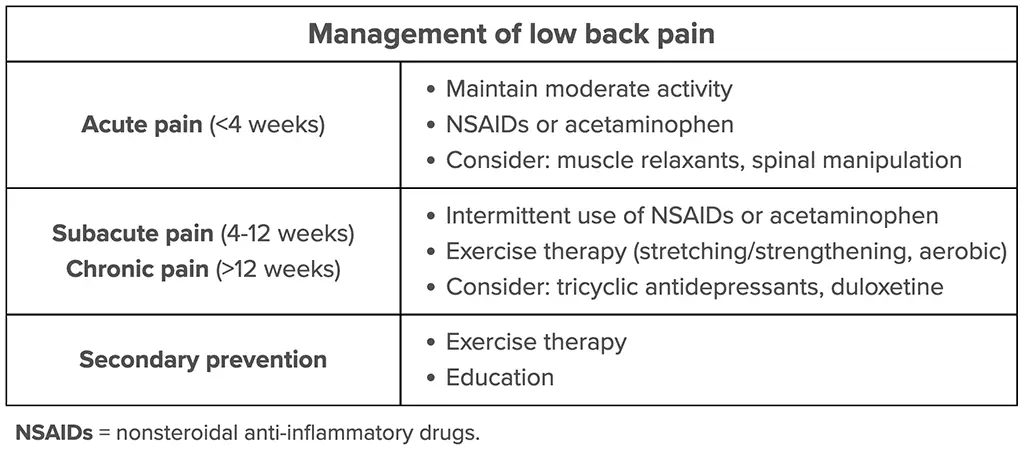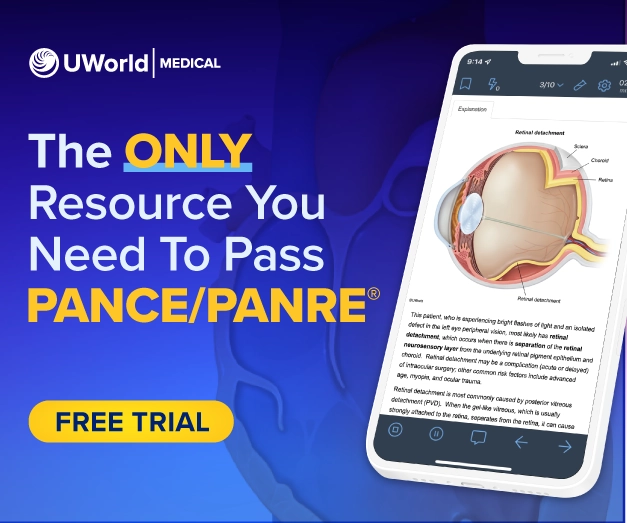The Physician Assistant National Certifying Examination (PANCE) is developed and managed by the National Commission on Certification of Physician Assistants (NCCPA). Every couple of years, the PANCE undergoes content updates published in a revised NCCPA blueprint. The 2025 PANCE blueprint went into effect on January 2025 for all PANCE test-takers. Download our 2025 PANCE blueprint PDF to get a comprehensive list on everything tested on the exam.
What Are the PANCE Blueprint Categories?
The PANCE blueprint breaks down the exam into medical content and task categories defined as follows:
- Medical Content Categories: Knowledge of the diseases and disorders physician assistants encounter.
- Task Categories: Knowledge and skills related to tasks physician assistants perform when treating patients.
Because the medical field is constantly changing to address improved practices and technologies, the NCCPA leans on certified PAs to provide industry information through profession-wide practice analysis studies. Certified PAs are also involved in updating the exam by reviewing the results of the practice analyses, creating new questions, critiquing the exam prior to it being administered, reviewing exam-question performance data, and offering suggestions for the passing standard. While PANCE blueprint updates do not occur annually, certified PAs continuously work with the NCCPA to ensure the PANCE is relevant.
PANCE medical content categories
As defined above, the medical content categories on the PANCE assess candidates’ knowledge of the diseases and disorders PAs encounter. Below are the contents of each category and how each category is allocated on the exam:
| Categories | % Allocation |
|---|
Cardiomyopathy
- Dilated
- Hypertrophic
- Restrictive
- Stress
Conduction disorders/dysrhythmias
- Atrial fibrillation
- Atrial flutter
- Atrial tachycardia
- Atrioventricular block
- Bradycardia
- Bundle branch block
- Idioventricular rhythm
- Junctional rhythms
- Premature contractions
- QT prolongation
- Sick sinus syndrome
- Sinus arrhythmia
- Torsades de pointes
- Ventricular fibrillation
- Ventricular tachycardia
Congenital heart disease
- Atrial septal defect
- Coarctation of aorta
- Patent ductus arteriosus
- Patent foramen ovale
- Tetralogy of Fallot
- Transposition of the great vessels
- Ventricular septal defect
Coronary artery disease
- Acute coronary syndrome
- Angina pectoris
- Non–ST-segment elevation myocardial infarction
- ST-segment elevation myocardial infarction
- Unstable angina
- Atherosclerosis
Heart failure
Hypertension
- Primary hypertension
- Secondary hypertension
- Hypertensive emergencies
Hypotension
- Orthostatic hypotension
- Vasovagal hypotension
Lipid disorders
Shock
- Cardiogenic
- Distributive
- Hypovolemic
- Obstructive
Traumatic, infectious, and inflammatory heart conditions
- Cardiac tamponade
- Infective endocarditis
- Infective endocarditis
- Pericardial effusion
- Infective endocarditis
Valvular disorders
- Aortic
- Mitral
- Pulmonary
- Tricuspid
Vascular disease
- Aortic aneurysm/dissection
- Arterial embolism/thrombosis
- Arteriovenous malformation
- Deep venous thrombosis
- Giant cell arteritis
- Peripheral artery disease
- Phlebitis/thrombophlebitis
- Varicose veins
- Venous insufficiency
Acneiform eruptions
- Acne vulgaris
- Folliculitis
- Perioral dermatitis
- Rosacea
Desquamation
- Erythema multiforme
- Stevens-Johnson syndrome
- Toxic epidermal necrolysis
Diseases/disorders of the hair and nails
- Alopecia
- Onychomycosis
- Paronychia/felon
Envenomations and arthropod bite reactions
Infectious diseases
- Bacterial
- Cellulitis
- Erysipelas
- Impetigo
- Fungal
- Candidiasis
- Dermatophyte infections
- Parasitic
- Lice
- Scabies
- Viral
- Condyloma acuminatum
- Exanthems
- Hand-foot-and-mouth disease
- Herpes simplex
- Molluscum contagiosum
- Varicella-zoster virus infections
- Verrucae
Keratotic disorders
- Actinic keratosis
- Seborrheic keratosis
Neoplasms
- Benign
- Malignant
- Premalignant
Papulosquamous disorders
- Atopic dermatitis
- Contact dermatitis
- Drug eruptions
- Eczema
- Lichen planus
- Pityriasis rosea
- Psoriasis
- Atopic dermatitis
Pigment disorders
- Melasma
- Vitiligo
Skin integrity
- Burns
- Lacerations
- Pressure ulcers
Vascular abnormalities
- Cherry angioma
- Hemangioma
- Purpura
- Stasis dermatitis
- Telangiectasia
Vesiculobullous disease
- Pemphigoid
- Pemphigus
Other dermatologic disorders
- Acanthosis nigricans
- Hidradenitis suppurativa
- Lipomas/epidermal inclusion cysts
- Photosensitivity reactions
- Pilonidal disease
- Urticaria
Adrenal disorders
- Cushing syndrome
- Pheochromocytoma
- Primary adrenal insufficiency
Diabetes mellitus
- Type 1
- Type 2
Hypogonadism
Neoplasms
- Multiple endocrine neoplasia
- Neoplastic syndrome
- Primary endocrine malignancy
Parathyroid disorders
- Hyperparathyroidism
- Hypoparathyroidism
Pituitary disorders
- Acromegaly/gigantism
- Cushing disease
- Diabetes insipidus
- Dwarfism
- Pituitary adenoma
- Prolactinoma
- SIADH
Thyroid disorders
- Goiter
- Hyperthyroidism
- Hypothyroidism
- Thyroid nodules
- Thyroiditis
Eye disorders
- Conjunctivitis
- Corneal disorders
- Cataract
- Corneal ulcer
- Infectious
- Keratitis
- Pterygium
- Inflammatory disorders
- Iritis
- Scleritis
- Uveitis
- Lacrimal disorders
- Dacryoadenitis
- Dacryocystitis
- Dacryostenosis
- Keratoconjunctivitis sicca
- Lid disorders
- Blepharitis
- Chalazion
- Ectropion
- Entropion
- Hordeolum
- Neuro-ophthalmologic disorders
- Nystagmus
- Optic neuritis
- Papilledema
- Orbital disorders
- Orbital cellulitis
- Periorbital cellulitis
- Retinal disorders
- Macular degeneration
- Retinal detachment
- Retinopathy
- Retinal vascular occlusion
- Vision abnormalities
- Amaurosis fugax
- Amblyopia
- Glaucoma
- Strabismus
- Presbyopia
Ear disorders
- External ear
- Cerumen impaction
- Otitis externa
Inner ear
- Acoustic neuroma
- Dysfunction of eustachian tube
- Labyrinthitis
- Vertigo
Middle ear
- Cholesteatoma
- Otitis media
- Otosclerosis
- Tympanic membrane perforation
Hearing impairment
- Conductive
- Sensorineural
Other abnormalities of the ear
- Mastoiditis
- Meniere disease
- Tinnitus
Foreign bodies of the eyes, ears, nose, and throat
Trauma of the eyes, ears, nose, and throat
- Barotrauma of the ear
- Blowout fracture
- Corneal abrasion
- Globe rupture
- Hyphema
Neoplasms
- Benign
- Malignant
Nose/sinus disorders
- Epistaxis
- Nasal polyps
- Rhinitis
- Sinusitis
Oropharyngeal disorders
- Infectious/inflammatory disorders
- Angioedema
- Aphthous ulcers
- Candidiasis
- Deep neck infection
- Dental abscess
- Dental caries
- Epiglottitis
- Gingivitis
- Laryngitis
- Peritonsillar abscess
- Pharyngitis
- Salivary disorders
- Parotitis
- Sialadenitis
- Other oropharyngeal disorders
- Leukoplakia
Biliary disorders
- Acute/chronic cholecystitis
- Chronic cholecystitis
- Cholangitis
- Cholelithiasis
Colorectal disorders
- Abscess/fistula
- Anal fissure
- Constipation
- Diverticulitis
- Fecal impaction/incontinence
- Hemorrhoids
- Inflammatory bowel disease
- Irritable bowel syndrome
- Ischemic bowel disease
- Obstruction
- Polyps
- Rectal prolapse
- Toxic megacolon
Diarrhea
Esophageal disorders
- Esophagitis
- Gastroesophageal reflux disease
- Mallory-Weiss tear
- Motility disorders
- Strictures
- Varices
- Zenker diverticulum
Gastric disorders
- Gastritis
- Gastroparesis
- Peptic ulcer disease
- Pyloric stenosis
Gastrointestinal bleeding
Hepatic disorders
- Acute/chronic hepatitis
- Chronic hepatitis
- Cirrhosis
- Fatty liver
- Portal hypertension
Hernias
Hyperemesis
Ingestion of toxic substances or foreign bodies
Metabolic disorders
- Phenylketonuria
- Rickets
Neoplasms
- Benign
- Malignant
Nutritional
- Food allergies and food sensitivities Hypervitaminosis
/hypovitaminosis - Malabsorption
- Refeeding syndrome
Obesity
Pancreatic disorders- Acute pancreatitis
- chronic pancreatitis
Small intestine disorders
- Appendicitis
- Celiac disease
- Intussusception
- Obstruction
- Polyps
Benign prostatic hyperplasia
Bladder disorders
- Incontinence
- Overactive bladder
- Prolapse
Congenital and acquired abnormalities
- Cryptorchidism
- Peyronie disease
- Trauma
- Vesicoureteral reflux
Infectious disorders
- Cystitis
- Epididymitis
- Orchitis
- Prostatitis
- Pyelonephritis
- Urethritis
Neoplasms
- Bladder
- Penile
- Prostate
- Testicular
Nephrolithiasis/urolithiasis
Penile disorders
- Erectile dysfunction
- Hypospadias/epispadias
- Paraphimosis/phimosis
- Priapism
Testicular disorders
- Hydrocele/varicocele
- Testicular torsion
Urethral disorders
- Prolapse
- Stricture
Autoimmune disorders
Coagulation disorders
- Clotting factor disorders
- Thrombocytopenias
Cytopenias
- Anemia
- Leukopenia
Cytoses
- Polycythemia
- Thrombocytosis
Hemoglobinopathies
- G6PD deficiency
- Hemochromatosis
- Sickle cell disease
- Thalassemia
Immunologic disorders
Neoplasms, premalignancies, and malignancies
- Acute/chronic lymphocytic leukemia
- Acute/chronic myelogenous leukemia
- Lymphoma
- Multiple myeloma
- Myelodysplasia
Transfusion reaction
Bacterial diseases
- Bartonella
- Botulism
- Campylobacter jejuni infection
- Chancroid
- Chlamydia
- Cholera
- Clostridioides difficile infection
- Diphtheria
- Gonococcal infections
- Methicillin-resistant Staphylococcus aureus infections
- Rheumatic fever
- Rocky Mountain spotted fever
- Salmonellosis
- Shigellosis
- Tetanus
Fungal diseases
- Blastomycosis
- Candidiasis
- Coccidioidomycosis
- Cryptococcosis
- Histoplasmosis
- Pneumocystis
Mycobacterial diseases
- Atypical mycobacterial disease
- Tuberculosis
Parasitic diseases
- Amebiasis
- Giardiasis
- Helminth infestations
- Malaria
- Pinworms
- Toxoplasmosis
- Trichomoniasis
Prenatal transmission of disorders
- Congenital varicella
- Herpes simplex virus
- Human papillomavirus
- Zika virus
- Group B streptococcus
Prion diseases
Sepsis/systemic inflammatory response syndrome
Spirochetal diseases
- Lyme disease
- Syphilis
Viral diseases
- Coronavirus infections
- Cytomegalovirus infections
- Epstein-Barr virus infections
- Erythema infectiosum
- Herpes simplex virus infections
- HIV infection
- Human papillomavirus infections
- Influenza
- Measles
- Mumps
- Polio
- Rabies
- Roseola
- Rubella
- Varicella-zoster virus infections
Chest/rib disorders
- Deformities
- Fractures
Compartment syndrome
Degenerative diseases
- Osteoarthritis
Infectious diseases
- Osteomyelitis
- Septic arthritis
Lower extremity disorders
- Avascular necrosis
- Developmental dysplasia
- Fractures/dislocations
- Osgood-Schlatter disease
- Slipped capital femoral epiphysis
- Soft-tissue injuries
Neoplasms
- Benign
- Malignant
- Paget disease of bone
Rheumatologic disorders
- Connective tissue diseases
- Fibromyalgia
- Gout/pseudogout
- Juvenile rheumatoid arthritis
- Osteoporosis
- Polyarteritis nodosa
- Polymyalgia rheumatica
- Polymyositis
- Reactive arthritis
- Rheumatoid arthritis
- Sjögren syndrome
- Systemic lupus erythematosus
- Systemic sclerosis (Scleroderma)
Spinal disorders
- Ankylosing spondylitis
- Herniated disk disease
- Kyphosis
- Scoliosis
- Spinal stenosis
- Spondylolisthesis
- Spondylolysis
- Sprain/strain
- Torticollis
- Trauma
Thoracic outlet syndrome
Upper extremity disorders
- Fractures/dislocations
- Soft-tissue injuries
Cerebrovascular disorders
- Arteriovenous malformation
- Cerebral aneurysm
- Coma
- Hydrocephalus
- Intracranial hemorrhage
- Stroke
- Syncope
- Transient ischemic attack
Closed head injuries
- Concussion
- Postconcussion syndrome
- Traumatic brain injury
Cranial nerve palsies
Encephalopathic disorders
Headaches
- Cluster headache
- Migraine
- Tension headache
Infectious disorders
- Encephalitis
- Meningitis
Movement disorders
- Essential tremor
- Huntington disease
- Parkinson disease
- Restless legs syndrome
- Tourette disorder
- Tardive dyskinesia
Neoplasms
- Benign
- Malignant
Nerve disorders
- Complex regional pain syndrome
- Guillain-Barré syndrome
- Mononeuropathies
- Peripheral neuropathies
Neurocognitive disorders
- Cognitive impairment
- Delirium
Neuromuscular disorders
- Cerebral palsy
- Multiple sclerosis
- Myasthenia gravis
Seizure disorders
- Focal seizures
- Generalized seizures
- Status epilepticus
Spinal cord syndromes
- Cauda equina syndrome
- Epidural abscess
- Spinal cord injuries
Abuse and neglect
- Child abuse
- Elder abuse
- Intimate partner violence
- Physical abuse
- Psychological abuse
- Sexual abuse
Anxiety disorders
- Generalized anxiety disorder
- Panic disorder
- Phobias
Bipolar and related disorders
Depressive disorders
- Major depressive disorder
- Persistent depressive disorder (dysthymia)
- Premenstrual dysphoric disorder
- Suicidal/homicidal behaviors
Disruptive, impulse-control, and conduct disorders
Dissociative disorders
Feeding and eating disorders
Human sexuality and gender dysphoria
Neurodevelopmental disorders
- Attention-deficit/hyperactivity disorder
- Autism spectrum disorder
Obsessive-compulsive and related disorders
Personality disorders
Psychogenic nonepileptic seizure
Schizophrenia spectrum and other psychotic disorders
Sleep-wake disorders
- Narcolepsy
- Parasomnias
Somatic symptom and related disorders
Substance-related and addictive disorders
Trauma- and stressor-related disorders
- Adjustment disorders
- Bereavement
- Post-traumatic stress disorder
Acute respiratory distress syndrome
Foreign body aspiration
Hyaline membrane disease
Infectious disorders
- Acute bronchiolitis
- Acute bronchitis
- Acute epiglottitis
- Croup
- Empyema
- Influenza
- Pertussis
- Pneumonias
- Bacterial
- Fungal
- HIV-related
- Viral
- Respiratory syncytial virus infection
- Tuberculosis
Neoplasms
- Benign
- Malignant
- Carcinoid tumors
Obesity hypoventilation syndrome
Obstructive pulmonary diseases
- Asthma
- Chronic obstructive pulmonary disease
- Cystic fibrosis
Pleural diseases
Pulmonary circulation
- Cor pulmonale
- Pulmonary edema
- Pulmonary embolism
- Pulmonary hypertension
Restrictive pulmonary diseases
- Idiopathic pulmonary fibrosis
- Pneumoconiosis
- Sarcoidosis
Sleep apnea
Acid-base disorders
Acute kidney injury and acute renal failure
- Intrinsic
- Prerenal
- Postrenal
Chronic kidney disease/end-stage renal disease
Congenital or structural renal disorders
- Horseshoe kidney
- Hydronephrosis
- Polycystic kidney disease
Electrolyte disorders
Fluid imbalances
Neoplasms
- Renal cell carcinoma
- Wilms tumor
Renovascular disease
Rhabdomyolysis
Breast disorders
- Abscess
- Fibroadenoma
- Fibrocystic changes
- Galactorrhea
- Gynecomastia
- Mastitis
Cervical disorders
- Cervicitis
- Dysplasia
Contraceptive methods
Human sexuality and gender identity
Infertility
Menopause
Menstrual disorders
Neoplasms of the breast and reproductive tract
- Benign
- Malignant
Ovarian disorders
- Cysts
- Polycystic ovarian syndrome
- Torsion
Pelvic inflammatory disease
Pregnancy
- Abruptio placentae
- Breech presentation
- Cervical insufficiency
- Cesarean and operative delivery
- Classifications of abortion
- Ectopic pregnancy
- Fetal distress
- Gestational diabetes
- Gestational trophoblastic disease
- Hypertensive disorders of pregnancy
- Labor/delivery
- Multiple gestation
- Placenta previa Postnatal/postpartum care
- Postpartum hemorrhage
- Postpartum pituitary disorders
- Postpartum psychiatric disorders
- Preconception/prenatal care
- Prelabor rupture of membranes
- Rh incompatibility
- Shoulder dystocia
- Umbilical cord prolapse
Trauma in pregnany
- Physical
- psychological
- Sexual
Uterine disorders
- Endometriosis
- Leiomyoma
- Prolapse
Vaginal/vulvar disorders
- Bartholin gland cysts
- Cystocele
- Prolapse
- Rectocele
- Vaginitis
PANCE task categories
The task categories on the PANCE assess candidates’ knowledge and skills related to tasks PAs perform when treating patients. Below are the contents of each category and how each category is allocated on the exam:
| Categories | % Allocation |
|---|
Knowledge of:
- General physical examination components and techniques
- Pertinent historical information
- Risk factors for development of significant medical conditions
- Significant physical examination findings
- Signs and symptoms of significant medical conditions
Skill in:
- Reviewing pertinent resources to conduct comprehensive and/or problem-based interviews and physical examinations with compassion and empathy
- Identifying pertinent patient and family historical information from patients and caregivers
- Identifying pertinent physical examination information
- Triaging of patients based on recognition of abnormal vital signs, examination findings, and/or general observations
Knowledge of:
- Patient-centered education relating to diagnostic and laboratory studies
- Indications for initial and subsequent diagnostic and laboratory studies
- Indications for preventive screening tests
Skill in:
- Collecting diagnostic and laboratory specimens
- Communicating risks, benefits, and results effectively to other members of the healthcare team
- Communicating risks, benefits, and results effectively to patients, families, and caregivers
- Integrating diagnostic and laboratory results with history and physical examination findings
- Reviewing and interpreting results of diagnostic and laboratory studies
- Selecting appropriate diagnostic and laboratory studies
- Using diagnostic equipment safely and appropriately
Knowledge of:
- Significance of diagnostic and laboratory studies as they relate to diagnosis
- Significance of history as it relates to the differential diagnosis
- Significance of physical examination findings as they relate to diagnosis
Skill in:
- Formulating most likely differential diagnoses
- Incorporating history, physical examination findings, and diagnostic data into medical decision-making
- Recognizing the need for referral to a specialist
- Selecting the most likely diagnosis in light of presented data
Knowledge of:
- Appropriate patient education regarding preventable conditions and lifestyle modifications
- Early detection and prevention of medical conditions
- Effects of aging and changing family roles
- Human growth and development
- Human sexuality and gender identity, gender transition, and associated medical issues
- Immunization schedules and recommendations for infants, children, adults, and foreign travelers/adoptions
- Impact of patient demographics on risks for medical conditions
- Prevention of communicable diseases
- Preventive screening recommendations
- Psychosocial effects of illness, stress, and injury as well as related healthy coping strategies
- Signs of abuse and neglect
Skill in:
- Adapting health maintenance to an individual patient’s context
- Communicating effectively with and educating patients, family members, and caregivers regarding medical conditions
- Conducting education on modifiable risk factors with an emphasis on primary and secondary prevention
- Reporting suspected abuse and/or trafficking
- Using appropriate screening tools
- Using counseling techniques
Knowledge of:
- Clinical procedures and their indications, contraindications, complications, risks, benefits, and techniques
- Conditions that constitute medical emergencies
- Criteria for admission to or discharge from the hospital or other facilities
- Management, treatment, and follow-up of medical conditions
- Palliative care and end-of-life issues
- Roles of other health professionals
- Sterile technique
- Support structure systems, based on patient needs
- Therapeutic regimens
- Universal precautions and special isolation conditions
Skill in:
- Demonstrating technical expertise related to performing specific procedures
- Determining the existence of support structures and using community resources to meet the needs of patients and caregivers
- Evaluating patient competence to make decisions
- Evaluating patient response to treatment/intervention
- Facilitating patient/caregiver adherence to and active participation in treatment
- Formulating and implementing treatment plans in accordance with applicable practice guidelines
- Interfacing in multidisciplinary teams, including education of other health care professionals
- Making appropriate dispositions
- Monitoring and managing nutritional status
- Prioritizing tasks
- Recognizing and initiating treatment for life-threatening conditions
- Using community resources to meet the needs of patients/caregivers
Knowledge of:
- Alternative/complementary therapies and their side effects, interactions, and toxicities
- Contraindications
- Drug interactions, including presentation and treatment
- Indications for use
- Mechanism of action
- Methods to reduce medication errors
- Monitoring and follow-up of pharmacologic regimens
- Pharmacokinetics, pharmacogenomics, and pharmacodynamics
- Prescribing, monitoring, and regulating controlled substances
- Presentation and management of adverse effects, allergic reactions and toxicities
- Special populations requiring drug/dose modification
- Substances of abuse
Skill in:
- Assessing patient adherence to drug regimens
- Drafting a prescription
- Evaluating, treating, and reporting adverse drug reactions and/or adverse effects
- Identifying and managing medication misuse
- Interacting with pharmacists to address medication issues
- Maintaining knowledge of relevant pharmacologic agents
- Monitoring pharmacologic regimens and adjusting as appropriate
- Prescribing controlled substances appropriately
- Selecting appropriate pharmacologic therapy and dosing
Knowledge of:
- Genetics
- Human anatomy and physiology
- Microbiology
- Pathophysiology
- Immunology
- Pharmacology
- Human behavior (e.g., sociology, psychology)
Skill in:
- Evaluating emerging medical trends critically as they relate to patient care
- Maintaining awareness of trends in infectious disease
- Relating pathophysiologic principles to specific disease processes
- Incorporating evidence-based medicine practices
Legal/medical ethics
Knowledge of:
- Informed consent and refusal process
- Living will, advance directives, organ donation, code status (e.g., do not resuscitate, do not intubate), medical power of attorney
- Medicolegal issues
- Patient preferences related to health care (e.g., cultural, religious, gender)
- Patient/provider rights and responsibilities and termination of the patient-provider relationship, including against medical advice
- Privacy, security, and responsibility related to medical record documentation and management
Skill in:
- Caring for patients with cognitive impairment
Medical informatics
Knowledge of:
- Billing/coding to maintain accuracy and completeness for reimbursement and administrative purposes
Skill in:
- Demonstrating appropriate medical record documentation
- Using appropriate medical informatics sources
Patient care and communication (individual patients)
Knowledge of:
- Affordable and effective health care that is patient-specific
- Communication and care preferences of diverse patient populations
- Impact of social determinants of health
Skill in:
- Acknowledging and applying patient/provider rights and responsibilities
- Establishing clinical rapport
- Patient-based interactions, including the ability to demonstrate cultural humility and competency
- Providing patient advice and education regarding the informed consent and refusal process
- Providing patient advice and education related to end-of-life decisions
PA role in professional practice
Knowledge of:
- Professional and clinical limitations, scope of practice, etc.
- Practice parameters: malpractice, mandated reporting, conflict of interest, impaired provider, ethical principles, effects of implicit bias
Skill in:
- Communicating and consulting with members of the health care team
Professional development
Knowledge of:
- Continuing medical education resources
Skill in:
- Critically analyzing evidence-based medicine
- Identifying and interpreting data from medical informatics sources and identifying appropriate reference sources
Public health (population/society)
Knowledge of:
- Basic disaster preparedness
- Infection control measures and response to outbreaks
- Occupational health issues as they pertain to health care as well as non–healthcare workers
- Population health, travel health, and epidemiology of disease states
Skill in:
- Protecting vulnerable populations and recognizing disparities in the provision of and access to healthcare
Risk management
Knowledge of:
- Accountability
- Effective resource management and utilization
- Quality improvement and patient safety
Skill in:
- Ensuring patient safety and avoiding medical errors
How medical content and task categories are tested
As you might have noticed, the percent allocation on each table equals 100%. This is because the medical content questions are coded to task areas (with the exception of the “Professional Practice” task category, totaling 5% allocation). As a result, medical content makes up 95% of the exam. Additionally, up to 20% of tested content may be related to general surgical topics. This percent allocation varies by exam.
PANCE Practice Questions Based on the NCCPA Blueprint
The UWorld PA QBank is written by practicing physician assistants to put aspiring PAs on a path to success. Our PANCE sample questions and industry-leading rationales are based on the latest NCCPA blueprints to ensure you know everything you’re expected to know on exam day. To see how our active-learning methodology can help you achieve PANCE success, try our example problems below. Submit your answers to view our award-winning explanations.
A 1-month-old boy is brought to the office for a routine visit. His prenatal and birth histories are unremarkable. His vital signs and pulse oximetry are normal. Examination shows a harsh, 3/6 holosystolic murmur over the left lower sternal border. Palpation indicates no thrill over the precordial region. Brachial and femoral pulses are 2+ and equal. The skin is pink and well perfused. ECG is normal. Which of the following is the best next step in management of this patient?
- Digoxin and diuretic therapy
- Echocardiography
- Oxygen administration
- Prostaglandin E1 therapy
- Reassurance and no further workup
This patient’s holosystolic murmur at the left lower sternal border is characteristic of a ventricular septal defect (VSD). VSD is the most common cause (~25%) of congenital heart disease. The presence of a harsh and loud murmur and a normal ECG, and the absence of concerning symptoms (eg, tachycardia, tachypnea, failure to thrive, right ventricular heave) make a small VSD more likely. Echocardiography should be performed to determine the location and size of the defect and to rule out other defects.
Small VSDs close spontaneously in 75% of children by age 2 years with no long-term sequelae. Large defects often present with a softer murmur due to less turbulence across a larger defect. High-volume shunting across the defect leads to pulmonary overcirculation, pulmonary hypertension, growth failure, congestive heart failure, and Eisenmenger syndrome.
(Choice A and C) This patient has no evidence of heart failure or hypoxia and therefore does not require digoxin, diuretics, or oxygen.
(Choice D) Prostaglandin E1 therapy is used to keep the ductus arteriosus open in infants with congenital heart defects that depend on blood flow between the systemic and pulmonary circulations through the ductus (eg, D-transposition of the great arteries with an intact atrioventricular septum).
(Choice E) No workup is needed if the murmur sounds like an innocent “flow” murmur of childhood, which is typically a grade 1 or 2 midsystolic ejection murmur.
Educational objective:
The classic ventricular septal defect murmur is a harsh, holosystolic murmur best heard at the left lower sternal border. Echocardiography should be performed to determine the location and size of the defect and to rule out other defects. Most small ventricular septal defects close spontaneously and require no treatment.








